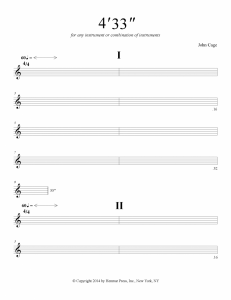Songs of Myself (Part 4)
By Asher Crispe: July 13, 2014: Category Inspirations, Simple Rhythms
 Music can be a fascinating intellectual puzzle. After our initial wonderment that rivets us to song in mesmeric fashion, we begin to let our musical experiences percolate in the realm of pure ideas. Our mind’s eye catches sight of the elegance of proportion, mysterious symmetries, reasoned groupings that factor in the assemblage of notes, in the celebration of the ‘order of things,’ and in the potential equivalencies between thinking substance and Being or Reality. If you have come to accept music as a sustained ‘thought experiment,’ a scaffolding upon which cognition climbs as a cultivated vine in the garden, then you have graduated on to the next level in our kabbalistic array of synonyms for musicality as they map onto the powers of the soul.
Music can be a fascinating intellectual puzzle. After our initial wonderment that rivets us to song in mesmeric fashion, we begin to let our musical experiences percolate in the realm of pure ideas. Our mind’s eye catches sight of the elegance of proportion, mysterious symmetries, reasoned groupings that factor in the assemblage of notes, in the celebration of the ‘order of things,’ and in the potential equivalencies between thinking substance and Being or Reality. If you have come to accept music as a sustained ‘thought experiment,’ a scaffolding upon which cognition climbs as a cultivated vine in the garden, then you have graduated on to the next level in our kabbalistic array of synonyms for musicality as they map onto the powers of the soul.
From out of the shadows of the unconscious crown scintillating intuition or chochmah awakens consciousness as dawn arrives on the horizon of our mental landscape. What sort of music is this? It is called maskil [משכיל] for it primarily strikes a cord with our sechel [שכל] or “intellect.” Sharing a common root, music of the mind seeks the sort of intelligibility that is normally only granted to mathematics. As a cerebral exercise, the two might seem like twins dressed in matching outfits.
But is it merely a numbers game? A logical operation? A dry formalism? Might the intellection of music disenchant and demystify the numinousness of the sound storms that enrapture us? Next to the decontextualized flow of unfiltered becoming that welcomes us to the concert, any attempt to ‘objectify’ the experience of the listener via analysis could corrode the performance as though it were cut out of one medium and laid down in another. And just as efforts to quantize recording leave us with only digital ‘remains’ of the ‘living’ analogue original, our stripping down of the tastes and emotions to the marrow of the music shifts our attention towards the prismatic quality of thought thinking about its endless abstract possibilities.
All of this reminds me of the ‘dreaded’ musical appreciation classes that were forced upon reluctant ears as a rite of passage in schools starting with the elementary grades and continuing through college distribution requirements. In the clamor of the class, I would pick out expressions like: “Classical–that’s for dinosaurs! That’s what my grandparents listen to! That’s for oldies!” Or, “I like that song from the radio [fill in the blank].” Most did not seem to be the experimenting types. We settle in with the conviction that we already more or less know what styles of music move us or simply what sounds good. This last contention itself contains another important assumption: must music sound “good” to be good? Must it always be euphonious or can a cacophonous blanket of white noise equally pass for music? Can we intellectually appreciate the brilliance of a musical innovation as something pushing the envelope or expanding the mind without connecting to it on an emotional level?
I would hazard to guess that most everyone has had their musical sensibilities offended at one point or another. Time for the bottle of aspire! Thrashing on guitars and pounding on drums with the sole goal being to make a loud racket—to go after the quantity of sound rather than its quality—might seem like an absurd pursuit but this anti-musical tendency has repeatedly tried to pass itself off as commercially viable in recent counter cultural musical genres from hardcore punk to screamo. On a totally different plane, avant-guard composers have spent the better part of the last century peering into the dark waters of discord and dissonance, often taking their pursuit of hitherto unexplored theoretical notions about music to new extremes.
 In my own musical trajectory, I seemed to have been attracted to the forces of disorder at an early age. On a conceptual level, I found a strange, direct democracy inviting unqualified participation in punk and alternative rock. Perhaps it was born out of a lack of formal musical training or talent, but the relative ease by which one could enter into that world of performance made it supremely attractive. The message was loud and clear: anyone can be a musician, anyone could start a band. As of resounding social critique, punk avoided all of the standard channels of approval. Even the distinction between the stage and the audience, the performer and those witnessing the performance, was eviscerated as the phenomenon of stage-diving introduced a continuous circuit of below ascending to above and then above to below. To the outside observer it took on the appearance of utter anarchy but to the spastic cadre “moshing” enthusiasts, it was practically more akin to stable chaos.
In my own musical trajectory, I seemed to have been attracted to the forces of disorder at an early age. On a conceptual level, I found a strange, direct democracy inviting unqualified participation in punk and alternative rock. Perhaps it was born out of a lack of formal musical training or talent, but the relative ease by which one could enter into that world of performance made it supremely attractive. The message was loud and clear: anyone can be a musician, anyone could start a band. As of resounding social critique, punk avoided all of the standard channels of approval. Even the distinction between the stage and the audience, the performer and those witnessing the performance, was eviscerated as the phenomenon of stage-diving introduced a continuous circuit of below ascending to above and then above to below. To the outside observer it took on the appearance of utter anarchy but to the spastic cadre “moshing” enthusiasts, it was practically more akin to stable chaos.
Having delighted in the release of primal explosive energies in the “noise fests” of our “sonic youth,” I was primed for what could be considered their musical antipode in terms of its theoretical complexity and formal genesis from out of the higher echelons of European compositional genius. Green as green could be in terms of the classical music world, I “accidentally” found myself at a chamber music performance of works by Bela Bartok and the chieftain of what I would later learn was the Zweite Wiener Schule or Second Viennese School, Arnold Schoenberg. More dissonance and yet in a wholly new music context, I thought. This gave me cause for further reflection. I began to investigate the revaluation of all musical values and the repeated attempts to transcend the limitations of prior generations of restrictive formalisms. In a certain way punk was nothing more than the completion of an expansive but downward trend towards an entropic “anything goes” definition of music. In those days I even had a radio show on our school station which I appropriately named “Distortions of a Simple Rhythm” where, for a time, I alternated between my earlier and later musical passions.
After all of this, what really confirmed that I was spellbound by thinking about music rather than merely feeling and being moved by it, was my brewing interest in the far out compositions of John Cage and John Zorn. In the case of the former, the example that went over the top was his iconic 4’33” where the musician or musicians would simply rest and not play for that specific amount of time. Amazingly there are recordings of this 4 minutes and 33 seconds of silence. Noting that it does not matter what instrument or interments it is performed on for obvious reasons, the “silly joke” that was laughed off by so many of my friends, actually posed a serious question for me in my quest to intellectualize music.
For those who hear the maskil or intellectual dimension of music, a blast of insight opens the world (especially the world of music) as a most meaningful path of contemplation. Cage forced us all to consider what the minimal requirements are for music to be music. Could silence, which plays such an important role in punctuating an ordinary musical composition, expand to consume the entire piece like some sort of black hold or acoustic cloak? Or did the accidental sounds, the background noises–the coughing of the audience, the whir of the air-conditioner, the creaking of the piano bench, the muffled horn of a distant taxi–all spontaneously and intentionally give birth to the unrepeatable musical event? Maybe simple sounds and noise are music? Maybe we have to be willing to give up control and nullify ourselves in the no-thingness of silence from which all sounds are inseminated?
In terms of the powers of the soul, maskil or intellectual level of music corresponds to chochmah or intuition/wisdom. On the more technical side, chochmah is dubbed the “father” figure of the mind insomuch as it represents the postulating of the abstract kernel idea or axiomatic seed that fertilizes our conceptual development. Trying out different “if…then…” ideas within a musical context breeds all sorts of innovations on a theoretical plane. Often depicted as the brain within the brain (another way of emphasizing its status as pure thought), chochmah, in and of itself, resists vocalization. It resides in a pre-linguistic zone that hovers between consciousness and its shadow. As such, intuition lingers in the safety of silence. What is heard already qualifies as understanding, while that which ‘rests’ in ‘silence’ brushes up against the conceptual and interrupts it without being grasped.
 So, the next time you or a friend hear something wild and puzzling, a musical composition that has you shrugging your shoulders exclaiming how you don’t ‘get it,’ consider that the intention of the piece might have been to nullify your pre-conceived notions and bore a hole in your understanding. We sometimes need to dispense with ‘easy listening’ in order to coax the listener to think outside and beyond what has been mentally mapped in advance and subsequently readily assimilated into one’s ear.
So, the next time you or a friend hear something wild and puzzling, a musical composition that has you shrugging your shoulders exclaiming how you don’t ‘get it,’ consider that the intention of the piece might have been to nullify your pre-conceived notions and bore a hole in your understanding. We sometimes need to dispense with ‘easy listening’ in order to coax the listener to think outside and beyond what has been mentally mapped in advance and subsequently readily assimilated into one’s ear.
Next, we turn to more comprehensible forms of musical expression that unite the mind and heart in Part Five.
http://www.interinclusion.org/inspirations/songs-of-myself-part-5/
http://www.interinclusion.org/inspirations/songs-of-myself-part-3/
Songs of Myself (Part 4),













;)
;)
;)
;)
;)
;)
;)
;)
;)
;)
